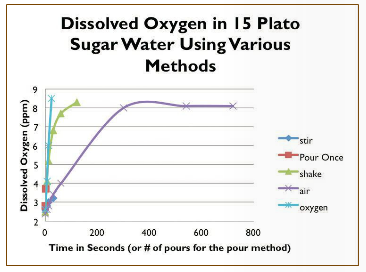Okay, I re-read it. On the flip side, YOU may want to read the article again.
Now look at the graph again. Ninety minutes to get to 68-75% oxygen saturation in water with the "aquarium pump" proxy (keeping in mind that the solubility of oxygen in standard gravity wort is 15-25% less than water makes it even worse)
Agree to disagree. The guy doesn't use ppm which is probably the best way to measure oxygen. He states that he only conducted the tests once, which make the results pretty questionable. And lastly they state they tried the air experiments with or without the aeration stone. One thing I will agree with you on though - anyone trying to pump air into wort without a stone is really off the mark. Punching holes into a tube like the experiment suggests is a horrible method for introducing air and definitely would take 90 mins. I hope no brewer is using that method. But the stone is definitely a viable option with use of a hepa filter.































![Craft A Brew - Safale S-04 Dry Yeast - Fermentis - English Ale Dry Yeast - For English and American Ales and Hard Apple Ciders - Ingredients for Home Brewing - Beer Making Supplies - [1 Pack]](https://m.media-amazon.com/images/I/41fVGNh6JfL._SL500_.jpg)


























